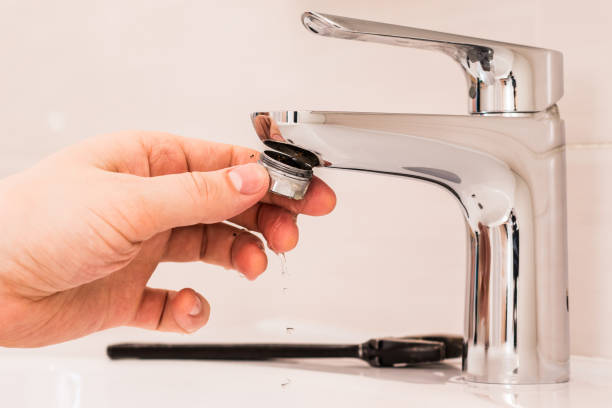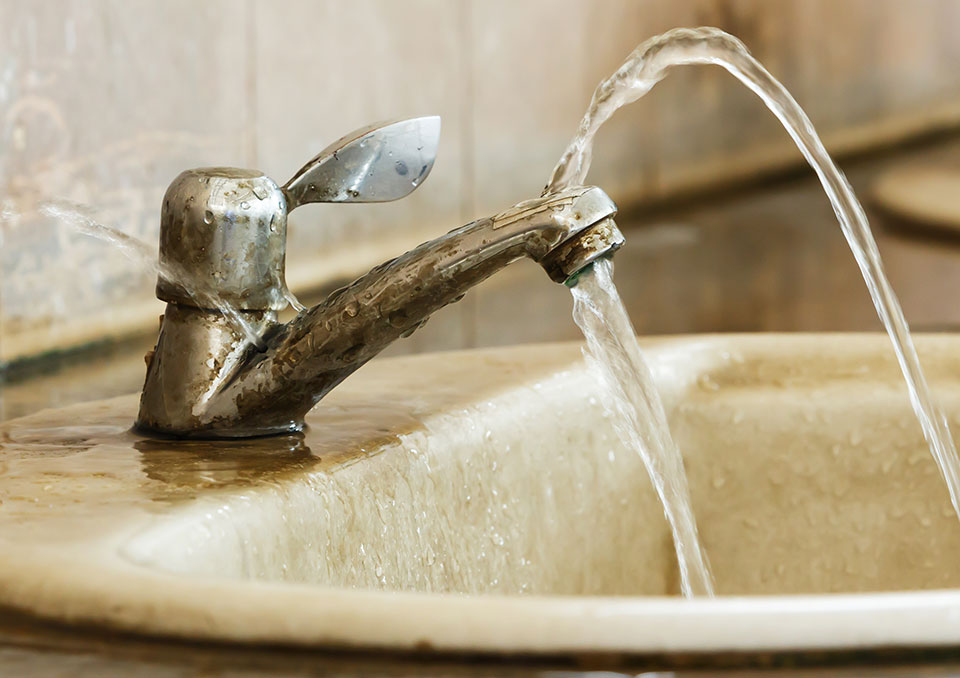Just about everyone is bound to have their unique assumption when it comes to What Causes Leaky Faucets & How To Fix Them.

Dripping faucets could feel like a small inconvenience, yet their influence exceeds just the inconvenience of the sound. From drainage to incurring unnecessary economic expenses and health threats, disregarding a trickling faucet can lead to numerous repercussions. In this article, we'll explore why it's essential to resolve this common family issue immediately and efficiently.
Waste of Water
Environmental Influence
Dripping taps add considerably to water waste. According to the Epa (EPA), a single faucet dripping at one drip per second can lose greater than 3,000 gallons of water annually. This not just pressures water sources however additionally impacts environments and wild animals depending on them.
Step-by-Step Overview to Repairing a Dripping Faucet
Tools Required
Prior to attempting to repair a leaking faucet, gather the essential tools, including a flexible wrench, screwdrivers, replacement components (such as washing machines or cartridges), and plumber's tape.
Typical Tap Issues and Their Solutions
Determine the sort of faucet and the certain concern causing the drip. Typical issues consist of damaged washers, corroded valve seats, or damaged O-rings. Describe manufacturer directions or on-line tutorials for detailed guidance on repair services.
Financial Prices
Raised Water Costs
Past the ecological influence, trickling taps can blow up water costs considerably. The gathered waste gradually equates into higher utility expenses, which can have been stayed clear of with prompt repair services.
Prospective Building Damages
Additionally, prolonged trickling can cause damage to components and surfaces bordering the faucet. Water accumulation can trigger staining, corrosion, and also structural concerns if left unattended, causing additional fixing costs.
Wellness Issues
Mold And Mildew and Mildew Growth
The consistent presence of dampness from a dripping tap develops a suitable environment for mold and mold development. These fungi not only endanger interior air quality however likewise posture health risks, especially for people with respiratory system problems or allergies.
Waterborne Illness
Stationary water in trickling taps can come to be a breeding ground for bacteria and other pathogens, increasing the risk of waterborne diseases. Contaminants such as Legionella germs flourish in stagnant water, possibly causing significant diseases when ingested or inhaled.
DIY vs. Professional Fixing
Advantages and disadvantages of DIY Fixing
While some might try to fix a trickling tap themselves, DIY fixings come with their very own set of difficulties. Without appropriate knowledge and devices, do it yourself efforts can intensify the issue or cause insufficient repair work, prolonging the trouble.
Benefits of Working With a Professional Plumber
Employing a specialist plumber guarantees that the underlying source of the dripping faucet is attended to effectively. Plumbing technicians have the knowledge and devices to detect and fix tap concerns successfully, saving time and reducing the danger of more damages.
Ecological Obligation
Private Contribution to Conservation
Taking responsibility for fixing dripping taps straightens with wider efforts towards water preservation and ecological sustainability. Every person's activities jointly make a considerable impact on preserving priceless sources.
Sustainable Living Practices
By prioritizing punctual repair services and embracing water-saving habits, people contribute to lasting living methods that profit both existing and future generations.
Safety nets
Regular Maintenance Tips
To stop leaking taps, carry out regular maintenance such as cleansing aerators, inspecting for leakages, and changing worn-out components promptly. Furthermore, take into consideration setting up water-saving tools or upgrading to a lot more reliable components.
Significance of Prompt Fixes
Dealing with leaking taps as quickly as they're noticed prevents further water wastage and prospective damage, eventually conserving both water and cash in the long run.
Impact on Residential Property Worth
Understanding of Well-Maintained Residential Property
Preserving a residential or commercial property in good condition, including addressing upkeep problems like leaking faucets, improves its viewed value and value amongst possible buyers or lessees.
Influence on Resale Value
Features with well-maintained plumbing components, including taps, command higher resale worths in the property market. Dealing with leaking taps can add to a positive perception throughout home evaluations and arrangements.
Conclusion
Resolving a leaking faucet surpasses mere benefit; it's a vital step toward saving water, lowering financial prices, and protecting wellness and residential or commercial property. Whether via do it yourself fixings or specialist aid, doing something about it to deal with trickling taps is a tiny yet impactful means to promote accountable stewardship of sources and contribute to a much healthier, more lasting future.
How to Fix a Dripping or Leaky Faucet
A leaking faucet is one of the most common problems that homeowners encounter, but it being commonplace doesn’t make it any less annoying. The constant drip drip drip of a leaking bathtub faucet, showerhead, or sink tap can disturb your home’s serenity. Left neglected, a dripping faucet can also result in higher water bills and discoloration or mold growth in your sink or plumbing fixtures.
Fortunately, you don’t have to be a trained plumber to know how to stop a dripping faucet. With some basic tools, replacement parts, and a little patience, leaky faucet repair is a breeze. In this article, we’ll explain what causes dripping faucets and how you can fix them.
What Causes a Leaking Faucet?
Kitchen and bathroom faucets come in all manner of designs, but most involve some combination of valves, O-rings, seals, and washers. The O-ring is usually the weakest link, but any one of these pieces can wear down over time. Heat, moisture, temperature fluctuations, minerals, mold, and movement can contribute to warping and corrosion, breaking the watertight seal. This just comes with the territory of being a homeowner. Everything is always subject to wear and tear, and some component parts of your appliances and fixtures need to be replaced on occasion. At least replacement O-rings are cheap!
More rarely, dripping faucets can be a symptom of excessively high water pressure. Were this the case in your home, you would probably notice that the leak is not isolated to one faucet. Water pressure issues are harder to resolve on your own. We recommend contacting a professional plumber if you suspect your water pressure is too high.
How to Fix a Dripping Faucet
Pipe wrench or monkey wrench Allen wrench set Screwdrivers Old towel or rag Shut off the water.
Before you do anything, you need to turn off the water to keep from drenching your kitchen or bathroom. You should find a valve under the sink and against the wall. Once you’ve turned this valve, try turning the faucet on to confirm that the water source has been cut off.
If you can’t locate your local valve for the faucet you’re working on, you can always shut off the water to the house at the main valve. Of course, this will prohibit anyone from using the sinks, showers, or toilets while you’re working on the faucet that’s giving you trouble.
Plug or block the drain.
You’ll be disassembling the faucet and removing some small bits of hardware. Plug the drain with a stopper or rag to avoid the possibility of a small screw falling into your P-trap.
Take apart the faucet assembly.
There are several varieties of kitchen and bathroom faucets, each with its own manner of assembly. For detailed instructions on how to disassemble your faucet, you can refer to the fixture’s manual or contact the manufacturer. If you know whether you have a ball, disc, cartridge, or compression faucet, you can find detailed schematics online.
In general, you need to begin by removing the faucet handles. You might notice a small screw that you’ll need to remove with a screwdriver or Allen wrench. If you don’t see any visible securing hardware, it’s likely hidden under a decorative cap that can be unscrewed or popped off with flathead screwdriver.
Remove each piece methodically, consulting a schematic when necessary. Take notes or arrange the pieces in such a way to make it easier to correctly reassemble the faucet later.
Remove the cartridge.
Once you’ve removed the handles and securing hardware, you should be able to remove the valve cartridge or stem. Some cartridges will slide right out. Other faucet models will require you to loosen a nut with a pipe wrench before you can remove the valve stem.
Examine the exposed hardware.
With the cartridge or stem removed, inspect the component parts. Check the rubber O-rings for wear and tear. Also examine the seat washer for corrosion or other damage. These pieces are usually the responsible parties for a dripping faucet, but it’s worth inspecting the other component parts while you have the faucet disassembled.
Find replacement parts.
Once you’ve identified which faucet component has failed, find an identical replacement. Your local hardware store should have O-rings, seat washers, and other standard components in stock. If you have a luxury or uncommon faucet, you may have to contact the manufacturer for a replacement part.
It’s a good idea to take your old parts with you to the hardware store so you can compare them with the store’s inventory and be sure you’re purchasing the correct replacement.
Reassemble the faucet.
With your new parts in hand, reconstruct the faucet and handles. Don’t be tempted to overtighten screws or nuts. You might think this could create a better seal, but it can instead damage or bend a delicate part of the assembly and create a new problem for you.
Turn on the water and test the faucet.
The only thing left to do is test your work. Unplug the sink, turn the water back on, and try the faucet. Congratulate yourself on a job well done!
https://www.libertyhomeguard.com/how-to-fix-a-dripping-or-leaky-faucet/

As an enthusiastic person who reads on Why It's Important to Fix Leaky Faucets, I assumed sharing that editorial was essential. If you enjoyed reading our blog entry if you please make sure you remember to share it. Kudos for your time. Please come by our website back soon.